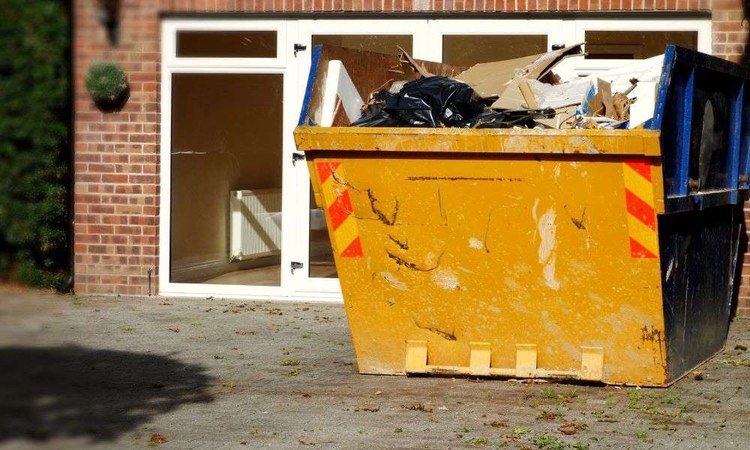Dumpster Rental Guide: Size, Benefits, and Duration Options
Renting a dumpster provides an efficient solution for managing large amounts of waste during home renovations, cleanouts, construction projects, and major decluttering efforts. Whether you're tackling a basement cleanout, roofing project, or estate sale preparation, understanding the rental process helps ensure you select the right container size, maximize the benefits, and plan appropriate rental periods for your specific needs.

How to Choose the Right Dumpster Size for Your Project
Selecting the appropriate dumpster size is essential for cost-efficiency and project success. Dumpster rental companies typically offer several standard sizes, measured in cubic yards, each suited for different project requirements:
-
10-yard dumpsters: These compact units (approximately 12ft long x 8ft wide x 4ft high) are ideal for small residential projects like garage cleanouts, small bathroom renovations, or yard debris removal. They typically hold about three pickup truck loads of waste.
-
20-yard dumpsters: Medium-sized options (approximately 22ft long x 8ft wide x 4ft high) work well for medium renovation projects, large deck removals, or flooring replacements for medium to large homes.
-
30-yard dumpsters: These larger containers (approximately 22ft long x 8ft wide x 6ft high) accommodate major home renovations, new construction, or large-scale cleanouts.
-
40-yard dumpsters: The largest standard option (approximately 22ft long x 8ft wide x 8ft high) serves commercial projects, major construction, or industrial applications.
When choosing a size, consider not only the volume of waste but also weight restrictions. Most rental companies impose weight limits regardless of container size, and exceeding these limits often results in additional fees.
What Are the Benefits of Using a Dumpster Rental for Home Cleanouts
Dumpster rentals offer numerous advantages during residential cleanout projects that make them worth considering over alternative disposal methods:
Efficiency and convenience stand as primary benefits. Rather than making multiple trips to disposal facilities, you gain a centralized collection point where waste can be deposited throughout your project. This streamlines the cleanup process significantly, allowing you to focus on the project rather than waste logistics.
Cost-effectiveness becomes apparent when comparing dumpster rentals to alternatives. While the upfront cost might seem substantial, it often proves more economical than multiple disposal facility trips when accounting for transportation costs, time investment, and disposal fees.
Environmental responsibility is another advantage. Reputable rental companies properly sort and process waste, ensuring recyclable materials are diverted from landfills. Many companies now emphasize sustainable disposal practices, helping reduce your project’s environmental footprint.
Safety improvements at your project site shouldn’t be overlooked. Having a designated waste collection point reduces trip hazards, prevents debris accumulation, and minimizes the risk of injury from scattered waste materials.
How Long Can You Keep a Rented Dumpster
Rental durations vary across providers but typically follow standard timeframes that can be adjusted to meet project needs. Standard rental periods generally range from 5 to 10 days, which suffices for most residential projects. This window provides adequate time for steady filling without rushing or extending unnecessarily.
For longer projects, extended rental options are available. Most companies offer flexible arrangements, allowing rentals for several weeks or even months for ongoing construction or extensive renovation work. These extended rentals may come at adjusted daily or weekly rates.
When planning your rental duration, consider these factors:
-
Project timeline and complexity
-
Workforce availability (more people typically generate waste faster)
-
Seasonal factors that might delay work
-
Potential for unexpected scope expansions
Many rental providers offer extension options if your project runs longer than anticipated. However, it’s advisable to communicate extension needs early, as availability constraints may arise, especially during peak seasons. Last-minute extension requests often incur premium rates compared to preplanned longer rentals.
Dumpster Rental Pricing and Provider Comparison
The cost of dumpster rental varies based on several factors including size, rental duration, location, and included weight allowance. Understanding these variables helps in making informed decisions and budgeting appropriately for your project.
| Provider | 20-Yard Dumpster Average Cost | Standard Rental Period | Weight Allowance | Additional Fees |
|---|---|---|---|---|
| Waste Management | $350-$450 | 7-10 days | 4,000 lbs | $50-$75 per ton over allowance |
| Republic Services | $325-$425 | 5-7 days | 3,000 lbs | $65-$80 per ton over allowance |
| Hometown Dumpster Rental | $295-$395 | 7 days | 3,500 lbs | $55-$70 per ton over allowance |
| Budget Dumpster | $300-$400 | 10 days | 4,000 lbs | $45-$65 per ton over allowance |
| Junk King | $375-$475 | 3-5 days | Pay by volume, not weight | Trip fees for relocation |
Prices, rates, or cost estimates mentioned in this article are based on the latest available information but may change over time. Independent research is advised before making financial decisions.
Additional pricing considerations include location accessibility (difficult access locations may incur surcharges), prohibited items (disposal of certain materials like electronics or hazardous waste often involves extra fees), and seasonal demand (prices often rise during peak renovation seasons like spring and early summer).
Preparing for Your Dumpster Rental Delivery
Proper preparation ensures smooth delivery and optimal placement of your rental dumpster. Start by selecting an appropriate location that balances convenience with practical considerations. The ideal spot should be easily accessible for both the delivery truck and your project team while remaining clear of obstacles.
For driveway placements, protect the surface with plywood sheets to prevent potential damage from the container’s weight and position. Ensure the selected area is free from low-hanging obstacles like power lines, tree branches, or roof overhangs that might interfere with delivery.
Confirm any permit requirements with local authorities before scheduling delivery, as many municipalities require permits for dumpsters placed on public property such as streets. Finally, clear a path at least 12 feet wide for the delivery truck to access your property, and ensure the placement area is completely clear of vehicles, equipment, or other obstructions on delivery day.
By understanding size options, recognizing benefits, planning appropriate rental durations, and properly preparing for delivery, you can maximize the value of your dumpster rental while maintaining an efficient, safe, and cost-effective project site.




